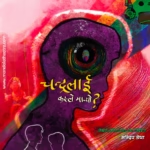The history of Nepali theatre dates back to the fifth century during the Lichchhavi dynasty. Back then, plays used to be staged in the ‘dabalis’—raised platforms with a performance area enclosed by four portable sliding pillars that could be transported to different locations. Since then, Nepali theatre has witnessed a plethora of changes regarding the story, sound, lights, acting and financial models, among others. Plays are now regularly staged in black box theatres.
Theatre in Nepal endured censorship during the Rana and the Panchayat rules and found free rein after the country became a democracy in 1990. The country’s new political system gave rise to a new media landscape, where theatre found a significant space. The proliferation of private media was paralleled by the development of the private theatre scene in the country—but mainly in Kathmandu—of which the establishment of Aarohan Gurukul Theatre in 2002 can seen as a milestone. The ascendant private sector media appears to have wholeheartedly embraced the theatre scene.
In the past, long-form articles, reviews and essays on the theatre used to find prominent space in mainstream newspapers and magazines. However, such efforts appear to have diminished in the present. This perhaps has to do with the changing media landscape. With the proliferation of digital media, print media is struggling, as evidenced by the decrease in the number of pages. Some have even opted to do away with arts and culture pages altogether.
Amid this evolution, online outlets in Nepal have yet to find a firm foothold, and they, too, appear indifferent to more critical and extensive coverage of theatre and the arts. There is less variation of theatre-related content in online media. Most of them are either hard news or summaries of the plays which derive heavily from press releases and social media posts.
We can surmise that media houses do not prioritise theatre-related news. The main sections in a paper—the ones that are most likely to attract attention—are almost always filled with political and business stories. Have you noted any instances of a theatre-related story on the front page of the broadsheets? Even in big papers, reporters covering theatre and arts are a handful and, in many cases, just one. Other beats— like politics or business—have plenty of reporters working on multiple issues at once. A reporter who wishes to write primarily about theatre has to don multiple hats and cover a wide range of topics. Because of this, they are unable to cover the diverse issues within theatre and the theatre community. As they lack sufficient time to do proper research, it becomes difficult to come up with well-researched stories on theatre that move beyond simple reviews or event coverage.
Articles are often superficial and rarely delve into the intricacies of staging plays. Technical aspects such as lighting, set designs, costumes, music, etc, are rarely talked about. We also rarely see in-depth profiles of theatre practitioners. There are several individuals involved in the making of a single play—make-up artists, costume designers, set designers, sound and light technicians—and each of them holds a significant role in making the play complete and successful. However, the contributions of those behind the scenes are rarely covered in the media. Theatre reporters need to understand that these individuals can provide insights and offer different perspectives on the play and overall theatre scene. Doing so would not just inform the people about the contribution of the ‘invisible’ hands in the theatre scene, but to a certain extent, it might also motivate and excite the crew to work harder in future projects.
Similarly, Nepali theatres also face challenges regarding finance and other resources. Those challenges should also be covered by the media. By putting their issues in the forefront, we can paint an honest picture of what it takes to run a theatre in the country.
The reviews featured in the media are also questionable—mainly in terms of quality. Though they’re called reviews, the feature is mostly just a summary of the play. Reviews are supposed to offer constructive criticisms, but reporters constantly fail to look at a play critically. The criticism—if any—lacks justifications based on research.
Similarly, the notion of review is not just about discussing the story of a play. There are many other essential elements of play that need to be looked at. The music, light, setting, and costume play equal roles in shaping the play. Discussing these aspects of the story enhances the quality of the review and makes it interesting for readers.
A reporter shouldn’t hesitate when it comes to exploring the dimensions of a play. For instance, one can easily—with proper research and argument—write an entire review by just focusing on one particular aspect of a play, like its setting, music or dialogue.
There is a high demand for well-researched and critical features about theatre because stories like these not only improve the quality of art journalism but also contribute to the overall growth of the theatre industry. Playwrights, directors and performers will surely become more conscious about creating good plays if the reporters start publishing well-researched reviews and stories related to the theatre scene. Therefore, media can contribute to the proliferation of meaningful and critical plays that have a lingering and positive impact on our society. It’s high time Nepali media reflect on how successful it has been towards reaching that goal.






